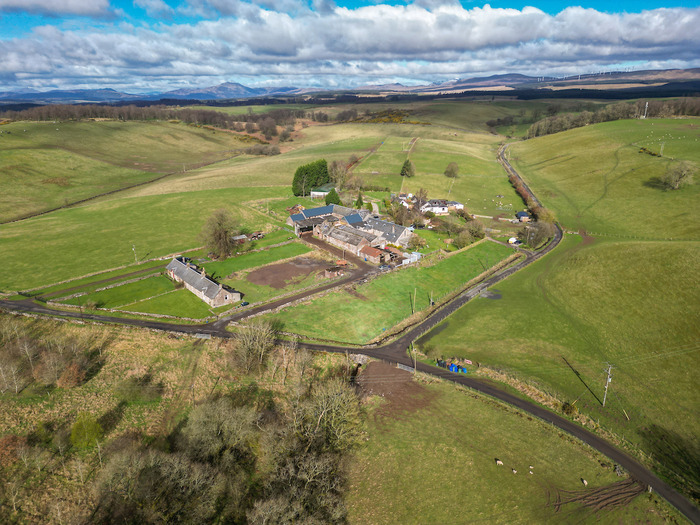- Aberdeen in Scotland is the UK area with the smallest salary growth, with wages increasing just 5.2% in the past 8 years, compared to the UK average of 28.1%.
- Of the top 15 areas with the slowest wage growths, eight are in Scotland
- Hackney and Newham in London are the UK areas with the highest salary growth, with wages increasing 51% since 2014
ABERDEEN in Scotland has had the smallest wage growth in the entire UK, new research can reveal.
Residents of Aberdeen have seen their salaries increase just 5.22% since 2014 – compared to the 51% increase for residents of Hackney and Newham, the area with the highest wage growth. The average wage increase for the UK since 2014 is 28.1%.
The research, by employment experts Digital ID, used new ONS data to analyse wages for 185 UK areas between July 2014 and December 2021, to discover which regions had the smallest and largest salary increases over the past 8 years.
Top 15 UK areas with the smallest wage growth
| UK area | Average wage in July 2014 | Average wage in December 2021 | Wage increase in % |
| Aberdeen | 2,778 | 2,923 | 5.22 |
| Shetland Islands | 2,301 | 2,521 | 9.56 |
| Na h-Eileanan Siar | 2,002 | 2,293 | 14.54 |
| South Teesside | 1,851 | 2,174 | 17.45 |
| Clackmannanshire and Fife | 2,031 | 2,411 | 18.71 |
| Caithness and Sutherland and Ross and Cromarty | 2,015 | 2,396 | 18.91 |
| Mid and East Antrim | 1,897 | 2,263 | 19.29 |
| Angus and Dundee City | 1,938 | 2,314 | 19.40 |
| Orkney Islands | 1,801 | 2,154 | 19.60 |
| Hartlepool and Stockton-on-Tees | 1,960 | 2,352 | 20.00 |
| Inverness and Nairn and Moray, Badenoch and Strathspey | 1,988 | 2,401 | 20.77 |
| Durham CC | 1,876 | 2,268 | 20.90 |
| Derby | 1,893 | 2,290 | 20.97 |
| Sunderland | 1,816 | 2,199 | 21.09 |
| Bradford | 1,766 | 2,142 | 21.29 |
| UK average | 28.10 |
Top 15 UK areas with the biggest wage growth
| UK area | Average wage in July 2014 | Average wage in December 2021 | Wage increase in % |
| Hackney and Newham | 2,095 | 3,164 | 51.03 |
| Haringey and Islington | 3,029 | 4,494 | 48.37 |
| Lewisham and Southwark | 2,692 | 3,955 | 46.92 |
| Camden and City of London | 4,995 | 7,257 | 45.29 |
| Wandsworth | 4,139 | 5,894 | 42.40 |
| Lambeth | 2,963 | 4,187 | 41.31 |
| Barnet | 2,774 | 3,899 | 40.56 |
| Kensington & Chelsea and Hammersmith & Fulham | 5,979 | 8,386 | 40.26 |
| Westminster | 6,223 | 8,589 | 38.02 |
| Bexley and Greenwich | 2,452 | 3,379 | 37.81 |
| Brent | 2,141 | 2,949 | 37.74 |
| Redbridge and Waltham Forest | 2,229 | 3,059 | 37.24 |
| Bromley | 2,985 | 4,073 | 36.45 |
| Tower Hamlets | 3,167 | 4,240 | 33.88 |
| Cambridgeshire CC | 2,386 | 3,172 | 32.94 |
| UK average | 28.10 |
The Shetland Islands in Scotland has experienced the second smallest wage growth in the UK, with residents seeing a salary increase of just 9.5% in the past eight years, compared to the 51% increase for residents of Hackney and Newham and the UK average increase of 28.1%.
Scottish areas dominate in the UK when it comes to small wage growths. Na h-Eileanan Siar in Scotland has the UK’s third smallest salary increase, with workers seeing a wage hike of 14.4% in the last eight years. Similarly, Clackmannanshire and Fife, and Caithness and Sunderland and Ross and Cromarty have had some of the UK’s slowest wage increases, with salary hikes of 18.7 and 18.9 % respectively.
Angus and Dundee City and the Orkney Islands also lagged behind in salary increases, with wages rising 19.4% and 19.6% respectively since 2014, compared to the UK average increase of 28.1%. Inverness and Nairn and Moray, Badenoch and Strathspey saw salary hikes of just 20.7%.
South Teesside has experienced the smallest wage growth in England and the fourth smallest in the UK. In South Teesside, workers’ pay jumped only 17.4% in eight years, compared to the UK average increase of 28.1%. Areas such as Hartlepool, Durham, Derby and Sunderland have also seen salary increases well below the UK average.
At the other end of the scale, Hackney and Newham in London have enjoyed the biggest wage growth since 2014, with workers seeing their pay jump 51% – well above the country’s average wage increase. Haringey and Islington have seen the UK’s second highest wage growth, with pay increasing 48% in the past 8 years. Lewisham and Southwark, Camden and City of London and Wandsworth have also experienced some of the country’s largest pay increases.
A spokesperson for Digital ID commented on the findings:
“The UK is facing a serious cost-of-living crisis, from soaring inflation to unmanageable energy bills, and this data reveals just how hard it is for many areas of the country to swallow the costs. The stagnant wages in areas such as Aberdeen, South Teesside, Durham and Derby show just how much the decision to increase National Insurance by 1.25 percentage points in April – which actually translates to an average 10 percent increase in National Insurance – will affect workers who are just trying to provide for their families. With the NICs hike affecting employers, too, it is unlikely that many companies will be offering pay rises, and unless something substantial is done to ease the cost-of-living crisis, we will see many more families pushed into poverty”.











